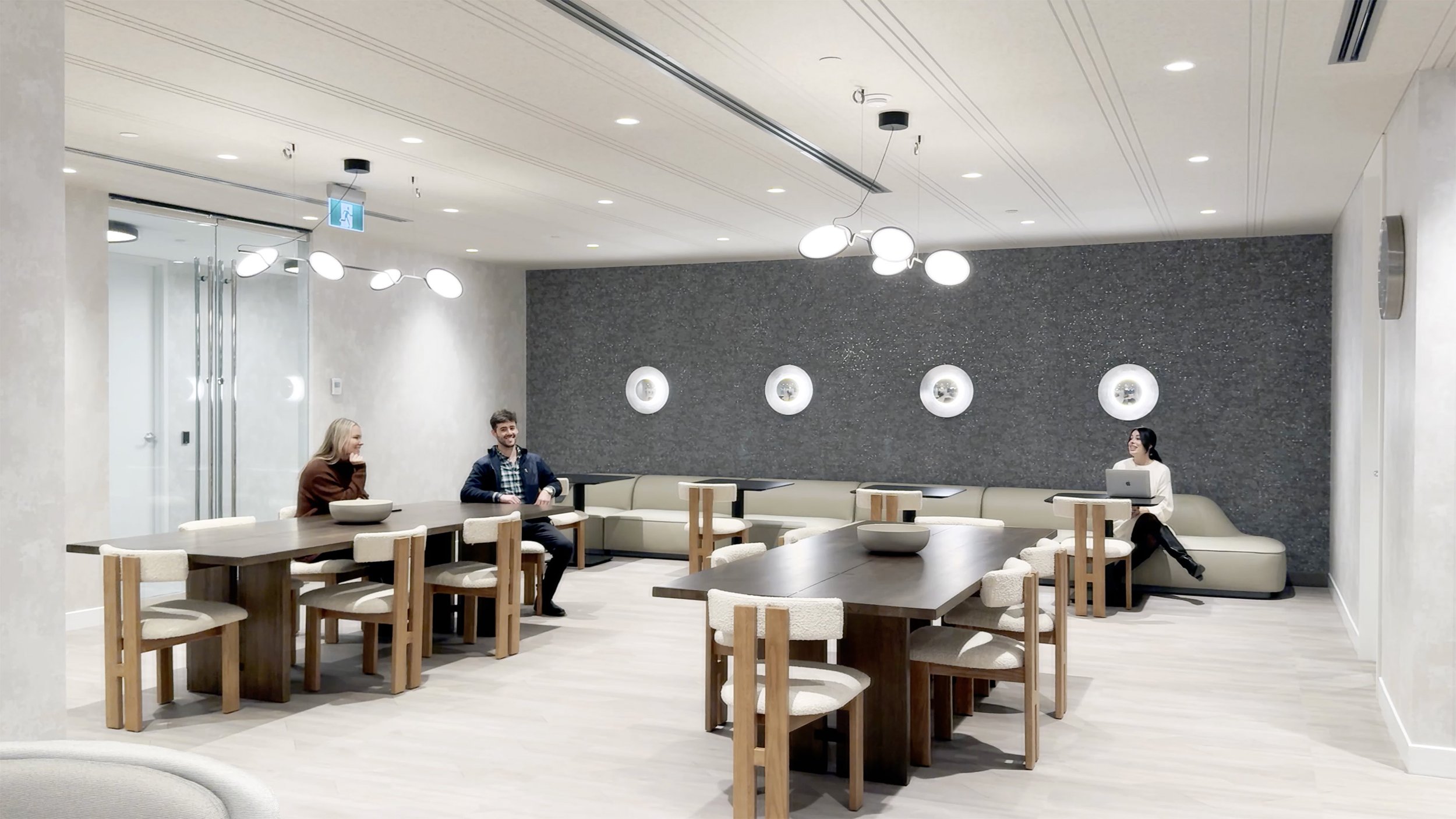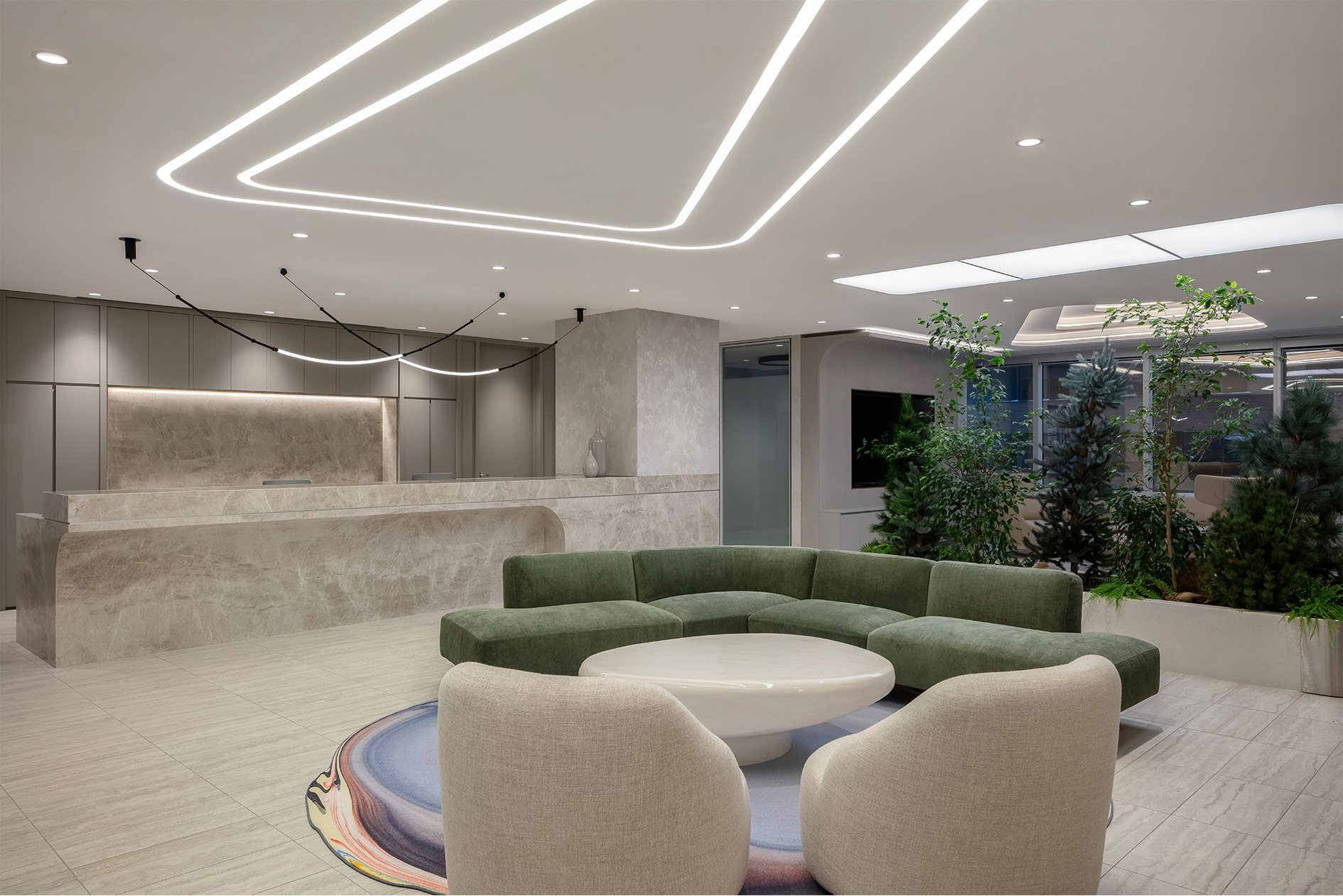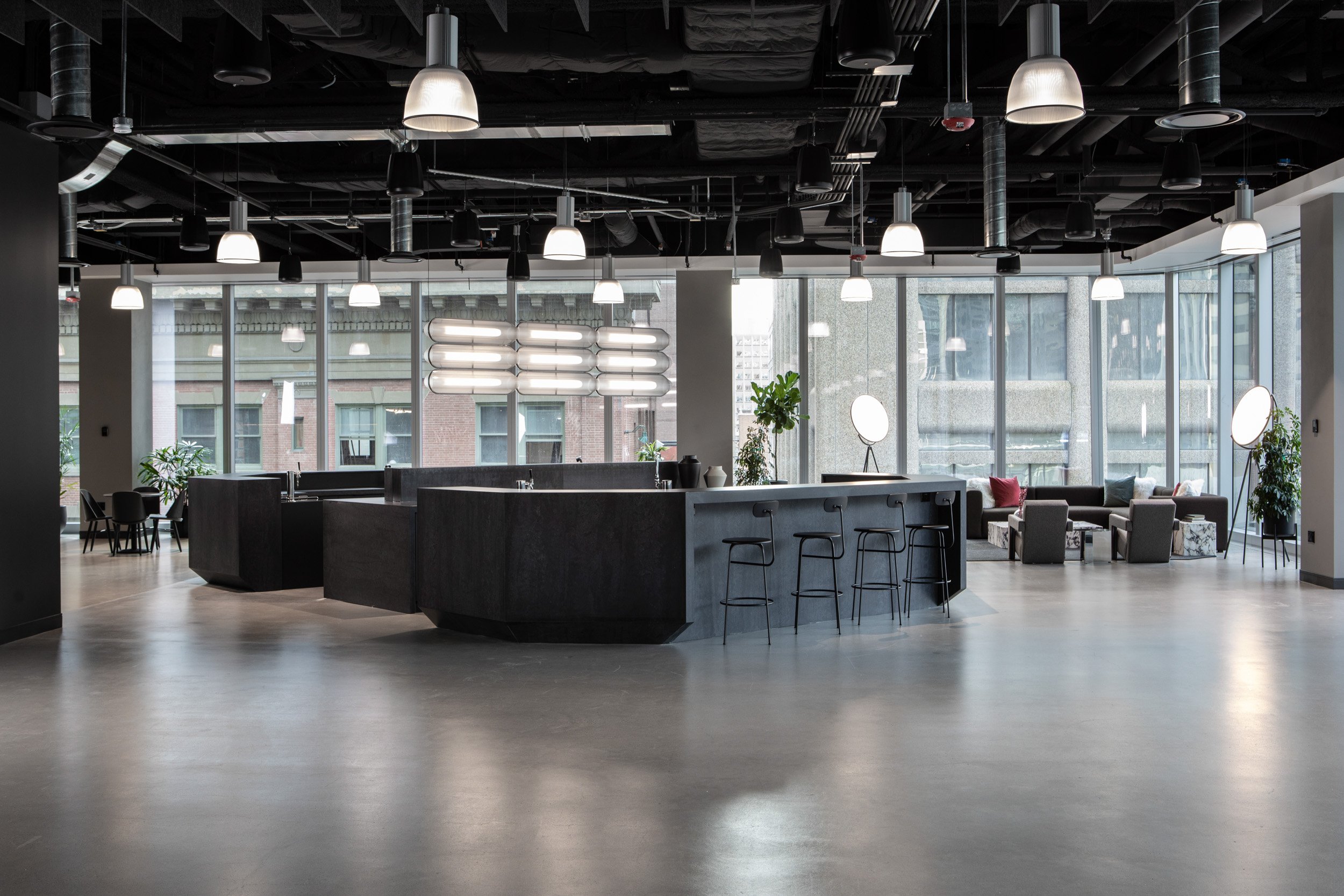
Creating impact through intelligent design.
Designed
for
possibility.
Thoughtfully designed settings inspire vibrant workplace culture.
Working closely with you, we define your workplace needs. By understanding your culture and business requirements, we create architectural interiors that portray your knowledge, skills and spirit.
Guided by people, values and corporate objectives, we create and deliver workspaces that foster connection, encourage growth and support operations.
Designing people-focused workplaces.
The workplace represents a significant part of daily life. We are driven to design meaningful environments that nurture well-being and innovation.
Shaping future-ready environments.
We actively engage to understand goals and work styles, gaining insight into the shifting needs of organizations. Using a future-forward approach, we build innovative, tech-adaptive environments that evolve with emerging workplace design movements.
Building on a legacy of excellence.
For 25 years, Shearer Design has been Calgary’s foremost workplace design firm, consistently delivering state-of-the-art business environments. Renowned for setting and upholding the highest standards in the industry, each project reflects a commitment to design leadership.
Driven by purpose, focused on people.
Aligning with your objectives, we craft tailored workplace solutions that define and communicate your brand. Through thoughtful and intentional design, we build functional environments that generate positive impact.
-
Our senior designers work with brokers to provide essential information during the leasing phase, from space plans and construction budgets to furniture estimates and project timelines.
-
Workplace Strategy aligns your people, processes and culture. Foundational to your office project, a strategy ensures important organizational goals are understood and realized in the physical space.
-
Thoughtful planning and innovative concepts guide every project. Precise drawings, project coordination and intentional design direction shape environments that define your company’s culture.
-
Every aspect of your build is managed with diligence and expertise by Shearer’s project management team. From kick-off to completion, we ensure seamless execution of your entire project, including clear communications and monitoring of budgets and timelines.
-
Healthier, more engaged employees contribute to greater productivity and retention. In following WELL Building Standards, we apply the science for improving human health and well-being through physical and social environments.
-
By prioritizing sustainable practices, our LEED accredited designers deliver high-performing, resilient spaces that reduce environmental impact.
OUR PROJECTS REFLECT OUR PAST WHILE INSPIRING THE FUTURE.
Sector— Energy
Size—257,400 sq ft
Location—Calgary
Sector—Real Estate
Size—101,150 sq ft
Location—Quarry Park, Calgary
Sector—Technology
Size—26,370 sq ft
Location—Brookfield Place, Calgary










